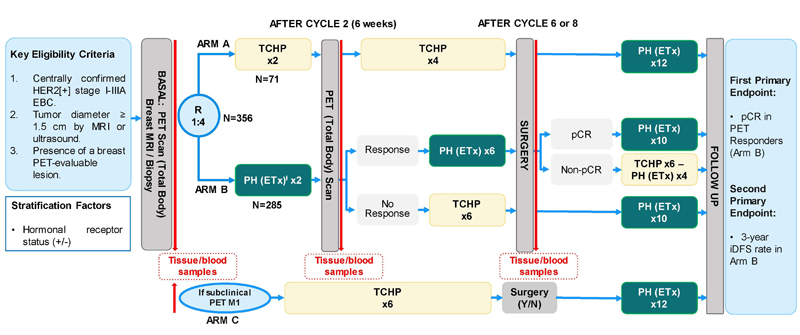The RAMES study enrolled 161 patients with progressive disease after first-line treatment with platinum/pemetrexed. Patients were randomised to gemcitabine (1,000 mg/m2 IV on days 1 and 8 every 21 days) plus placebo or gemcitabine plus ramucirumab (10 mg/kg IV on day 1, of a 21-day cycle), until tolerability or progressive disease. Median number of courses was 3.50 in the gemcitabine/placebo arm and 7.50 in the gemcitabine/ramucirumab arm. The primary endpoint of the trial was overall survival (OS). Secondary endpoints were progression-free survival (PFS), response rate, safety, and quality of life.
“Addition of ramucirumab to gemcitabine significantly improved median OS”, reported Maria Pagano (General Hospital Arcispedale Santa Maria Nuova, Italy) [1]. “Median OS in the gemcitabine/ramucirumab arm was 13.8 months and 7.5 months in the gemcitabine/placebo arm. OS at 6 and 12 months were 74.7% and 56.5% in the gemcitabine/ramucirumab arm and 63.9% and 33.9% in the gemcitabine/placebo arm, respectively. The beneficial effect of ramucirumab was observed regardless of age, tumor histological type, and time-to-progression from the first-line treatment.”
A key secondary endpoint was PFS, which was 6.2 months in the gemcitabine/ramucirumab arm and 3.3 months in the gemcitabine/placebo arm (P=0.26) and disease control rates (complete response, partial response, stable disease, respectively) were 72.5% (0%, 6.3%, 66.3%) in the gemcitabine/ramucirumab arm and 51.9% (0%, 9.9%, 42.0%) in the gemcitabine/placebo arm. Addition of ramucirumab to gemcitabine did not result in an increase of toxicity. The safety profile was comparable to other anti-angiogenic agents, particularly featuring hypertension and thrombosis.
“The RAMES study demonstrates that ramucirumab plus gemcitabine can be considered a new option for the second-line treatment in patients with MPM”, concluded Dr Pagano.
- Pagano M, et al. ASCO Virtual Meeting, 29-31 May 2020, Abstract 9004.
Posted on
Previous Article
« Tiragolumab and atezolizumab: ORR in NSCLC Next Article
ES-SCLC: pembrolizumab KEYNOTE-604 data »
« Tiragolumab and atezolizumab: ORR in NSCLC Next Article
ES-SCLC: pembrolizumab KEYNOTE-604 data »
Table of Contents: ASCO 2020
Featured articles
COVID-19 & Telemedicine
COVID-19 and Cancer Consortium Registry: initial results
Oncology hospital-at-home model reduces hospitalizations, emergency department visits, and costs
Nurse-led telephone triage system reduces hospitalizations, helps patients manage symptoms at home
Melanoma
Adjuvant pembrolizumab: durable RFS for stage III melanoma
Adjuvant pembrolizumab: durable RFS for stage III melanoma
Pembrolizumab plus low-dose ipilimumab well tolerated after progression on PD1 antibody therapy
Toripalimab plus axitinib effective in metastatic mucosal melanoma
Breast & Ovarian Cancer
Advanced breast cancer: locoregional therapy does not improve OS
T-DM1 does not improve safety or efficacy in HER-2 positive early breast cancer; favorable iDFS reported
Maintenance olaparib improves OS in relapsed ovarian cancer with BRCA1/2 mutation
Combination pembrolizumab/chemo improves PFS in metastatic TNBC
Effect of veliparib with or without cisplatin in breast cancer: results of SWOG S1416
PHOEBE, a phase 3 trial comparing pyrotinib and lapatinib in HER2-positive metastatic breast cancer
BYLieve demonstrates efficacy of PIK3CA-directed treatment post CDK4/6-ihibition
Strategies emerge for chemotherapy de-escalation in HER2-positive breast cancer
Multiple Myeloma
Carfilzomib: no PFS benefit for multiple myeloma
Lung Cancer
ES-SCLC: tremelimumab + durvalumab + chemotherapy misses endpoint
Adjuvant osimertinib in NSCLC: practice changing ADAURA trial
ES-SCLC: pembrolizumab KEYNOTE-604 data
Second-line gemcitabine plus ramucirumab significantly improves overall survival
Tiragolumab and atezolizumab: ORR in NSCLC
MET-amplified advanced NSCLC responds well to MET inhibitor capmatinib
Genitourinary Cancer
Urothelial cancer: avelumab works as maintenance therapy
ARAMIS final OS and nmCRPC safety outcomes
Final survival results from phase 3 SPARTAN trial
Novel drug for kidney cancers/VHL patients
Primary analysis from IMvigor010, adjuvant atezolizumab in high risk muscle-invasive urothelial carcinoma
First randomised trial of Lu-PSMA in mCRPC progressing after docetaxel
Gastrointestinal Cancer
HER2-expressing metastatic colorectal cancer: trastuzumab deruxtecan
REGOMUNE: a phase 2 study combining regorafenib and avelumab
Cardiotoxicity: consider switching to S-1
Perioperative chemotherapy for resectable pancreatic ductal adenocarcinoma
Real-world data of sequential sorafenib followed by regorafenib in unresectable HCC
Paediatric Cancer
Sustained improvements in quality of life with larotrectinib
Promising first immunotherapy trial in placental trophoblastic tumours
Precision medicine for poor-prognosis paediatric patients
Related Articles


September 8, 2020
Advanced breast cancer: locoregional therapy does not improve OS

February 23, 2021
Adjuvant pembrolizumab: durable RFS for stage III melanoma
© 2024 Medicom Medical Publishers. All rights reserved. Terms and Conditions | Privacy Policy
HEAD OFFICE
Laarderhoogtweg 25
1101 EB Amsterdam
The Netherlands
T: +31 85 4012 560
E: publishers@medicom-publishers.com

